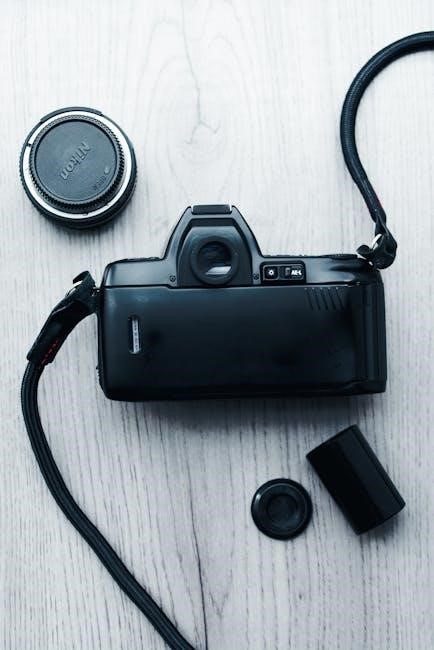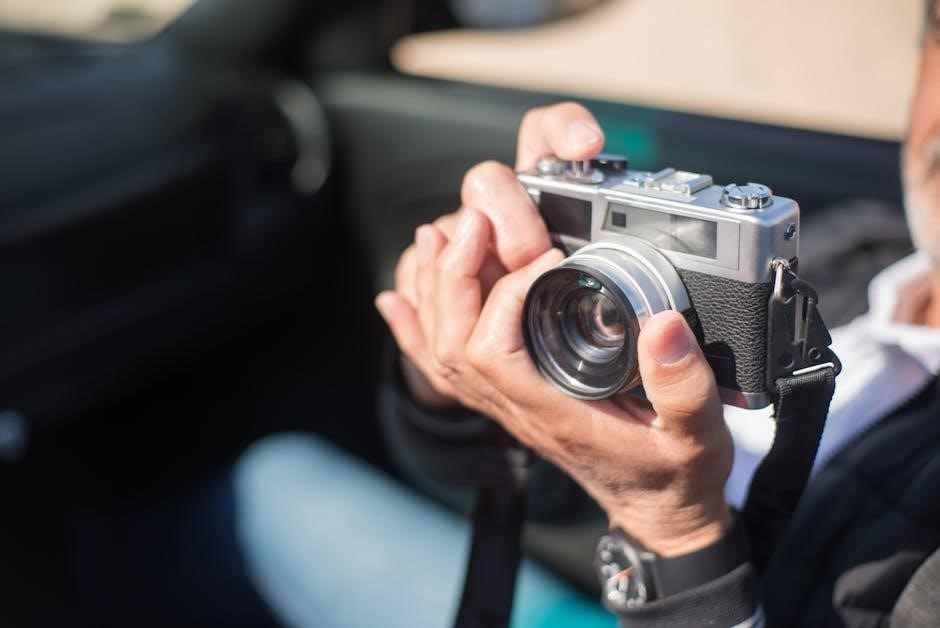Nikon F2: A Manual Masterpiece
The Nikon F2, manufactured from 1971 to 1980, represents a pinnacle of manual camera design. Favored by professionals, its robust build and reliable performance made it a standout. With fully manual controls, photographers had precise control over focus, aperture, and shutter speed, fostering creative expression and technical mastery.
The Nikon F2, a celebrated 35mm SLR camera, emerged as a successor to the original Nikon F. Produced from 1971 to 1980, it quickly gained prominence among professional photographers for its robust construction and fully manual operation. Unlike modern cameras laden with automated features, the F2 put creative control squarely in the hands of the photographer. Its manual focus system, aperture control, and shutter speed settings allowed for precise adjustments, catering to the demands of various shooting scenarios.
The F2’s popularity stemmed from its reliability and ruggedness. Photojournalists and serious enthusiasts relied on its ability to withstand demanding conditions, making it a trusted companion in the field. The camera’s design emphasized durability, ensuring it could endure the rigors of professional use. Its manual nature fostered a deeper understanding of photographic principles, encouraging photographers to master the art of capturing images without relying on automation. Today, the Nikon F2 remains a sought-after classic, cherished for its mechanical excellence and the hands-on experience it provides.
Nikon F2: Manual Focus System

The Nikon F2’s manual focus system is a testament to precision and user control, a hallmark of its design. Unlike modern autofocus systems, the F2 requires the photographer to manually adjust the lens’s focus ring until the subject appears sharp in the viewfinder. This hands-on approach demands a keen eye and a thorough understanding of focusing techniques.
The F2 features various focusing aids within its viewfinder, such as a split-image rangefinder and a microprism collar, to assist in achieving critical focus. These tools provide visual cues that help the photographer determine when the subject is accurately focused. The split-image rangefinder splits the image in two until proper focus is achieved, while the microprism collar displays a shimmering effect that disappears when the subject is in focus. Mastering these focusing aids is essential for maximizing the F2’s potential. With practice, photographers can develop a tactile connection with the camera, achieving precise focus with speed and confidence, a skill valued by enthusiasts.
Focusing Screens and Their Impact
The Nikon F2’s focusing screens significantly influence the manual focusing experience, offering photographers a variety of options to suit different shooting conditions and preferences. These interchangeable screens, easily swapped within the viewfinder, provide distinct focusing aids and visual characteristics, impacting how the photographer perceives sharpness and depth of field. The standard “A” screen, often praised, provides a balance of brightness and focusing accuracy.
Other available screens include those with split-image rangefinders, microprism collars, or clear matte surfaces. Split-image screens divide the image until focus is achieved, while microprism screens offer a shimmering effect that disappears upon correct focus. Clear matte screens provide an unobstructed view, favored for critical composition and accurate depth of field assessment. The choice of focusing screen directly affects the photographer’s ability to achieve precise manual focus, making it a crucial consideration for optimizing the F2’s performance for specific photographic tasks. Experimentation with different screens allows photographers to tailor the camera to their individual needs.
Aperture Control and Depth of Field
Mastering aperture control with the Nikon F2 is essential for creatively manipulating depth of field. This manual SLR allows for precise adjustments, giving photographers complete command over the area in focus. A wide aperture, such as f/1.4, creates a shallow depth of field, ideal for isolating subjects and producing pleasing background blur, also known as bokeh. Conversely, a smaller aperture, like f/16, yields a greater depth of field, ensuring sharpness throughout the image.
Understanding the relationship between aperture and depth of field is crucial for achieving desired effects. The F2’s manual aperture ring allows for real-time adjustments, enabling photographers to visualize the impact on the scene before capturing the image. For portraits, wider apertures soften backgrounds, drawing attention to the subject. In landscape photography, smaller apertures ensure sharpness from foreground to horizon. Skilled use of aperture transforms photographs, turning snapshots into artistic statements.
Shutter Speed and Creative Control

Shutter speed, a key element of exposure, offers significant creative control with the Nikon F2. As a manual camera, the F2 allows photographers to select precise shutter speeds, influencing how motion is captured. Fast shutter speeds, like 1/500th of a second, freeze action, ideal for sports or wildlife photography. Conversely, slow shutter speeds, such as 1 second or longer, create motion blur, conveying a sense of movement or ethereal quality.
The F2’s manual shutter speed dial provides direct access to a range of speeds, allowing for experimentation and fine-tuning. Intentional motion blur can soften harsh edges, create light trails, or emphasize speed. Long exposures at night capture star trails or smooth water surfaces. Understanding the interplay between shutter speed and aperture is crucial for achieving desired results. With the Nikon F2, photographers can harness shutter speed for artistic expression, turning mundane scenes into captivating images.
Using Non-Nikon Lenses with the F2
The Nikon F2, renowned for its adaptability, can accommodate various non-Nikon lenses, expanding creative possibilities. However, compatibility depends on the lens mount and mechanical linkages. Lenses with the Nikon F mount can generally be used, but functionality may vary. Older lenses might require manual diaphragm control, as automatic diaphragm mechanisms may not function correctly.
Adapters are available for mounting lenses with different mounts, but these often entail limitations. Metering may not be accurate, requiring manual exposure adjustments. Focus confirmation may also be unavailable. Before using a non-Nikon lens, research its compatibility and potential limitations. Test the lens thoroughly to ensure proper function and image quality. While the F2 offers flexibility, careful consideration and experimentation are essential when using lenses from other manufacturers. Remember to prioritize lens safety and avoid forcing any incompatible connections to prevent damage to the camera or lens.
Common Issues and Troubleshooting: Focusing Problems
Focusing problems on the Nikon F2 can stem from several factors. One common issue is a misaligned or damaged focusing screen, affecting visual accuracy. Check the screen for cleanliness and proper seating within the viewfinder. A slipping or incorrectly adjusted focusing ring on the lens can also lead to inaccurate focus. Inspect the lens mechanics for smooth operation and proper calibration.
Another potential cause is a discrepancy between the lens and camera calibration, particularly with older lenses. Test the focus at the film plane using a ground glass or frosted tape to verify accuracy. Shutter speed deviations, especially at slower speeds, can also contribute to perceived focusing issues. Ensure the shutter speeds are accurate for proper exposure. If problems persist, consult a qualified camera technician for repair or adjustment. Regular maintenance and careful handling can prevent many focusing problems.
Tips and Tricks for Manual Focusing with the F2

Mastering manual focus on the Nikon F2 requires practice and finesse. Utilize the focusing point within the viewfinder as a primary aid, especially when shooting at wider apertures like f/1.4, where focus becomes critical. Adjust the aperture to a higher number, like f/4 to f/10, to increase the depth of field and the range in focus.
Consider zone focusing, a technique that involves presetting the focus based on estimated distances, allowing for quicker adjustments in dynamic situations. Ensure your viewfinder is properly adjusted to your eyesight for optimal clarity. Experiment with different focusing screens to find one that suits your shooting style and visual preferences. Regularly clean your lenses and focusing screen to maintain sharpness and clarity.
Practice consistently to develop muscle memory and intuitive focus adjustments. Understanding the interplay between aperture, shutter speed, and focus will elevate your manual focusing skills.
Nikon F2: Legacy and Reputation
The Nikon F2 holds an esteemed position in photographic history, revered for its robust construction, reliability, and fully manual operation. Emerging in an era where manual control was paramount, the F2 quickly gained a reputation as a workhorse camera, favored by photojournalists and professionals who demanded precision and durability. Its impact on the photographic landscape is undeniable, solidifying Nikon’s standing as a leading manufacturer of professional-grade cameras.
The F2’s legacy extends beyond its technical specifications. It represents a time when photographers had a direct, tactile connection with their equipment, fostering a deeper understanding of the photographic process. Its enduring popularity among film enthusiasts speaks to its timeless design and the satisfaction derived from mastering its manual controls.

The F2 remains a sought-after classic, symbolizing an era of photographic excellence and the enduring appeal of manual photography.
Resources: Manuals and Further Information
For those seeking to delve deeper into the intricacies of the Nikon F2 and its manual operation, a wealth of resources is available. The original Nikon F2 Photomic Instruction Manual is an invaluable tool, providing comprehensive guidance on camera settings, functions, and maintenance. These manuals are often available online in PDF format, offering easy access to detailed information.
Online communities and forums dedicated to classic cameras are also excellent sources of information, with experienced users sharing tips, troubleshooting advice, and insights into the F2’s manual focusing system, aperture control, and shutter speed settings. Websites dedicated to camera collecting and repair often feature articles and guides specific to the Nikon F2.
Exploring these resources can enhance your understanding of the F2 and unlock its full potential as a manual masterpiece.